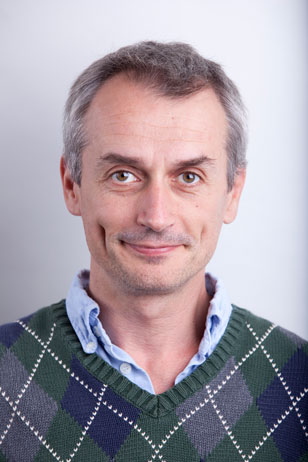 From science writer Suzan Mazur, at Oscillations, interviewing Bogdan Dragnea, who studies the physical structure of viruses via spectrosopy:
From science writer Suzan Mazur, at Oscillations, interviewing Bogdan Dragnea, who studies the physical structure of viruses via spectrosopy:
Suzan Mazur: Do you consider viruses live organisms since viruses can recognize their targets, attach, and infect their hosts—most viruses using a tail spike and needle [see following Parent lab image]—and as you’ve noted, they can “drive large-scale phenomena across the entire biosphere”?

Bogdan Dragnea: No, I don’t. I will stick with the definition that requires for a living organism to reproduce and produce mechanical work in a thermodynamic cycle. If it could do that, then I would say it’s alive. But the virus cannot do mechanical work as part of a cyclic transformation. That is because they do not have a metabolism. A virus can do mechanical work, but not as part of a cycle, that is, returning to an initial state after extracting energy from environment. It doesn’t do it in a cycle like we do it.
Viruses are part of the fabric of life for sure. They are extremely important for evolution, from very local to very global phenomena, but they are not organisms.
Suzan Mazur: There was an NSF-sponsored meeting in May in Alexandria, Virginia on synthetic cell development and one of the presenters, Richard Murray, an engineer at Caltech, said that as an engineer he doesn’t consider replication necessary for making a synthetic cell. Is it a matter of opinion or is there a scientific right or wrong on this, factual basis? By the way, Eugene Koonin sees viruses as active organisms.
Bogdan Dragnea: When you write an article or a paper and want to make a point you have to define your fundamental concepts. The definition for life in Philip Anderson’s paper stuck with me, which is, that you have to have replication and you have to have at least one cycle that produces mechanical work. The organism has to go from an initial state, produce some work and come back to the same initial state—by regaining its energy somehow from somewhere.
Suzan Mazur: Phil Anderson, the Princeton professor? I spoke with him at the 2013 Princeton Origins of Life conference.
Bogdan Dragnea: Yes, the Nobel laureate. That’s the definition for life I think makes sense. According to that definition [Anderson’s definition], viruses are sort of borderline citizens of the biosphere. They’re not quite alive.
But I know that viruses tend to be very complicated, so complicated sometimes that they closely resemble bacteria. Scientists have had a hard time distinguishing large viruses from bacteria. If viruses have their own metabolism or rudiments of a metabolism, then the line is blurry. It’s okay to be blurry. Why do we have to have a sharp line between life and non-life? More.
In short, it is an open question. The question relates to the role viruses can play in evolution, among other things. Are they precursors of life, detritus of life, or something in between? Or all three? Keep the file open.
Note: Oscillations is an excellent source for cutting-edge interviews with researchers active in origin and evolution of life.
See also: The minimal cell: How is research coming on a simple, self-replicating “artificial” cell? (Oscillations)
Viruses invent their own genes? Then what is left of Darwinism?
Why viruses are not considered to be alive
Another stab at whether viruses are alive
Phil Sci journal: Special section on understanding viruses
Should NASA look for viruses in space? Actually, it’s not clear that RNA came first. Nor is it clear that viruses precede life. A good case can doubtless be made for viruses being part of the scrap heap of existing life. But no matter. If you think you can find viruses in space, boldly go.
Why “evolution” is changing? Consider viruses
The Scientist asks, Should giant viruses be the fourth domain of life? Eukaryotes, prokaryotes, archaea… and viruses?
and
Are viruses nature’s perfect machine? Or alive?